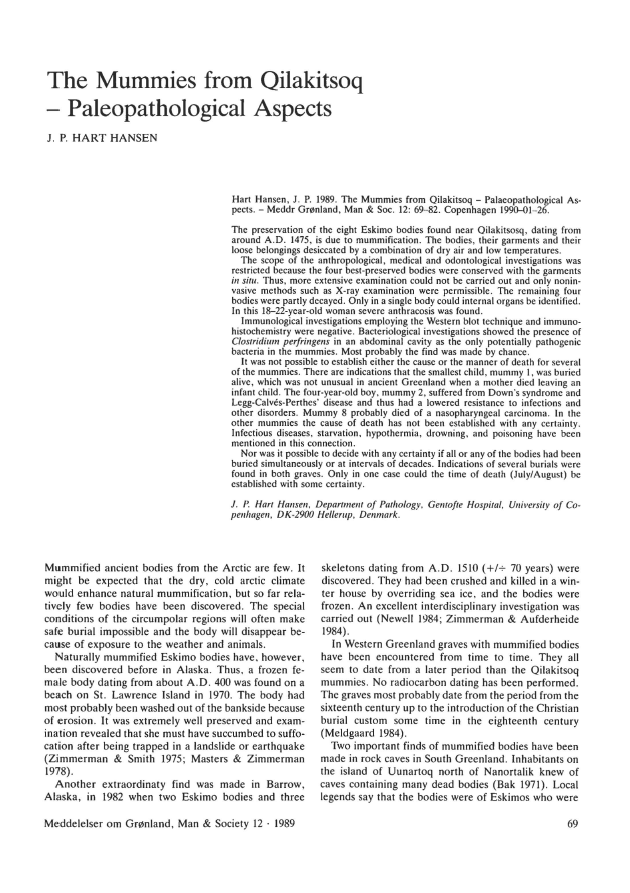The mummies from Qilakitsoq – Palaeopathological aspects
DOI:
https://doi.org/10.7146/mog-ms.v12.146593Abstract
The preservation of the eight Eskimo bodies found near Qilakitsosq , dating from around A.D. 1475, is due to mummification. The bodies, their garments and their loose belongings desiccated by a combination of dry air and low temperatures.
The scope of the anthropological, medical and odontological investigations was restricted because the four best-preserved bodies were conserved with the garments in situ. Thus, more extensive examination could not be carried out and only noninvasive methods such as X-ray examination were permissible. The remaining four bodies were partly decayed. Only in a single body could internal organs be identified. In this 18–22-year-old woman severe anthracosis was found.
Immunological investigations employing the Western blot technique and immunohistochemistry were negative. Bacteriological investigations showed the presence of Clostridium perfringens in an abdominal cavity as the only potentially pathogenic bacteria in the mummies. Most probably the find was made by chance.
It was not possible to establish either the cause or the manner of death for several of the mummies. There are indications that the smallest child, mummy 1, was buried alive, which was not unusual in ancient Greenland when a mother died leaving an infant child. The four-year-old boy, mummy 2, suffered from Down's syndrome and Legg-Calvés-Perthes’ disease and thus had a lowered resistance to infections and other disorders. Mummy 8 probably died of a nasopharyngeal carcinoma. In the other mummies the cause of death has not been established with any certainty. Infectious diseases, starvation, hypothermia, drowning, and poisoning have been mentioned in this connection.
Nor was it possible to decide with any certainty if all or any of the bodies had been buried simultaneously or at intervals of decades. Indications of several burials were found in both graves. Only in one case could the time of death (July/August) be established with some certainty.

Downloads
Published
Issue
Section
License
Coypyright by the authors and the Commision for Scientific Research in Greenland / Danish Polar Center/Museum Tusculanum Press as indicated in the individual volumes. No parts of the publications may be reproduced in any form without the written permission by the copyright owners.
